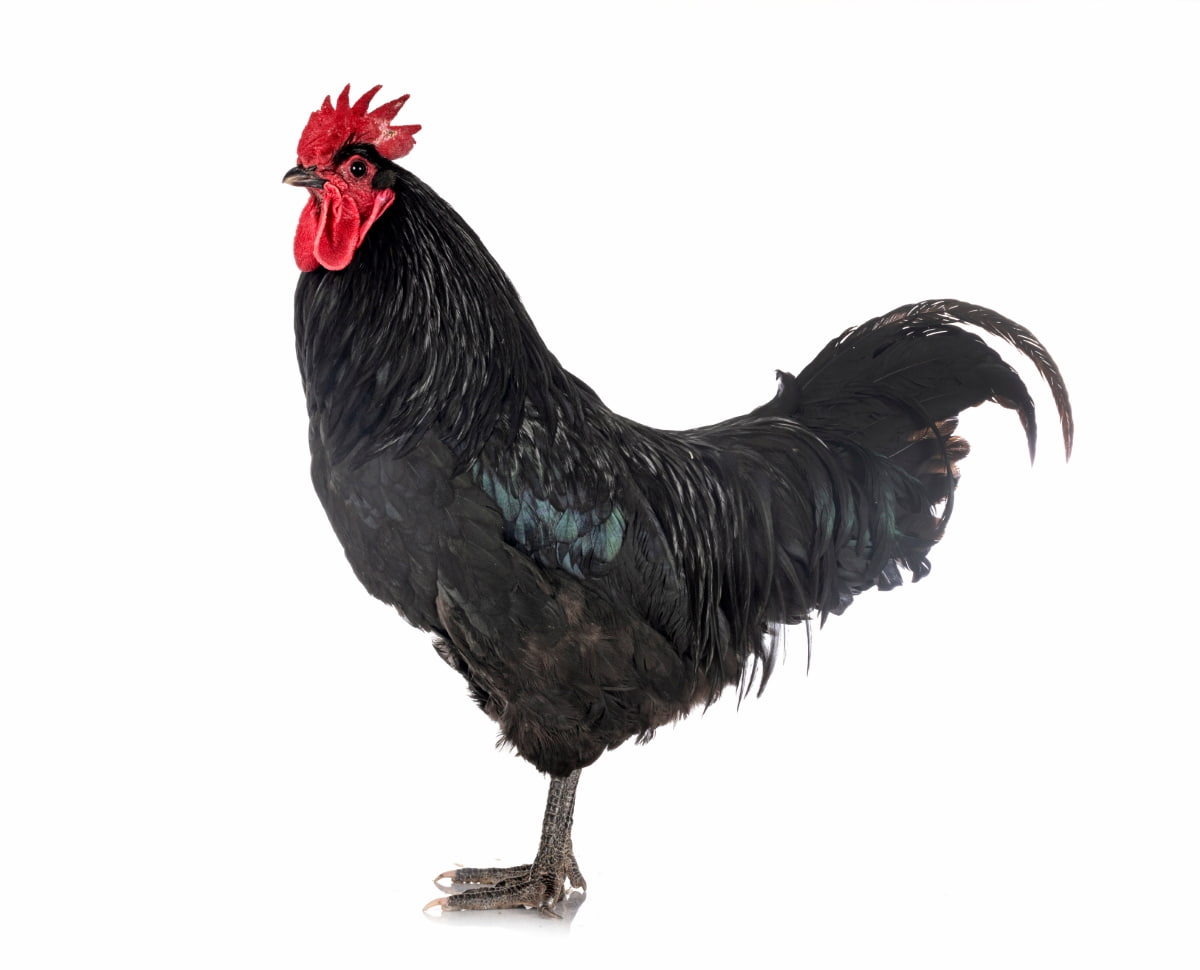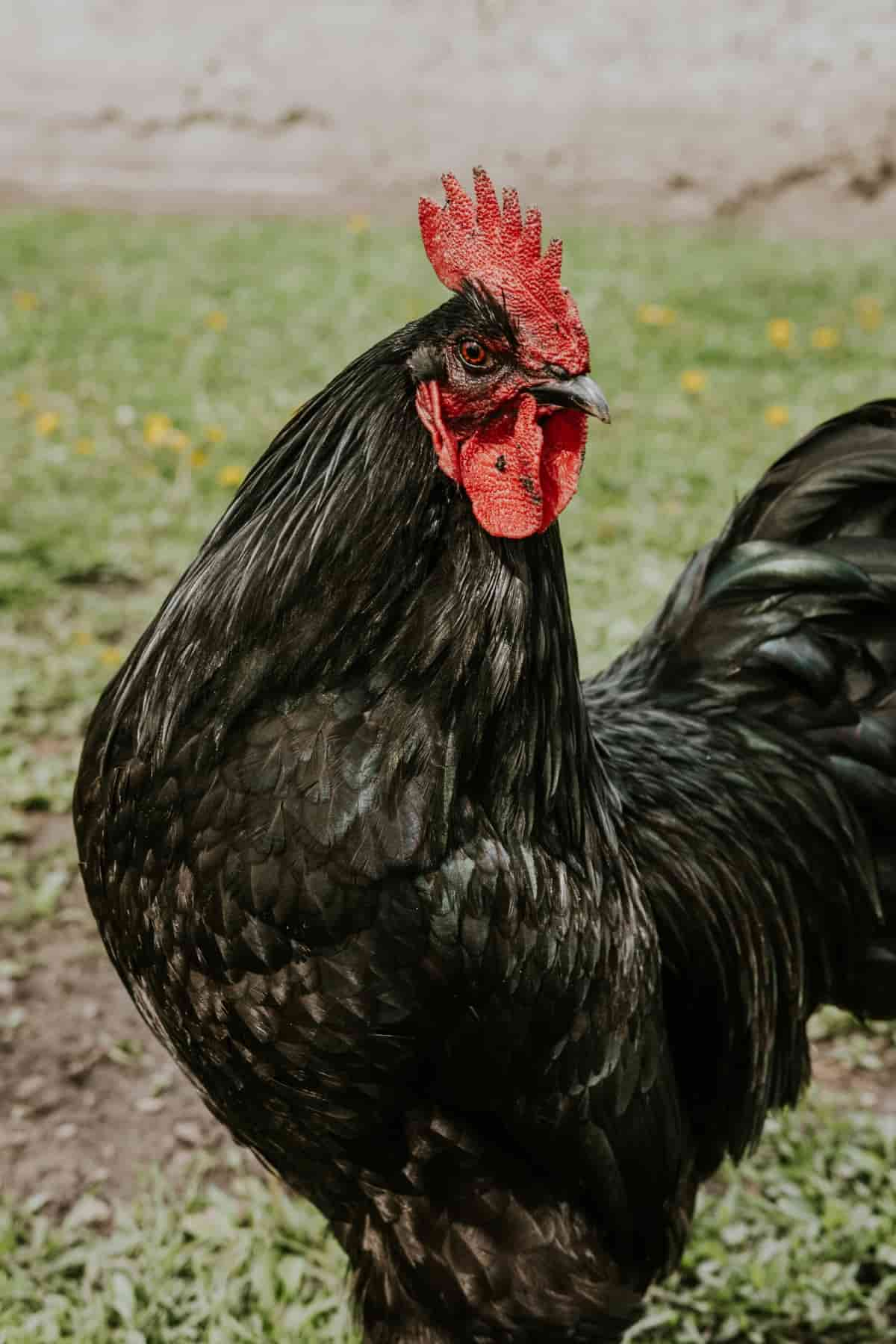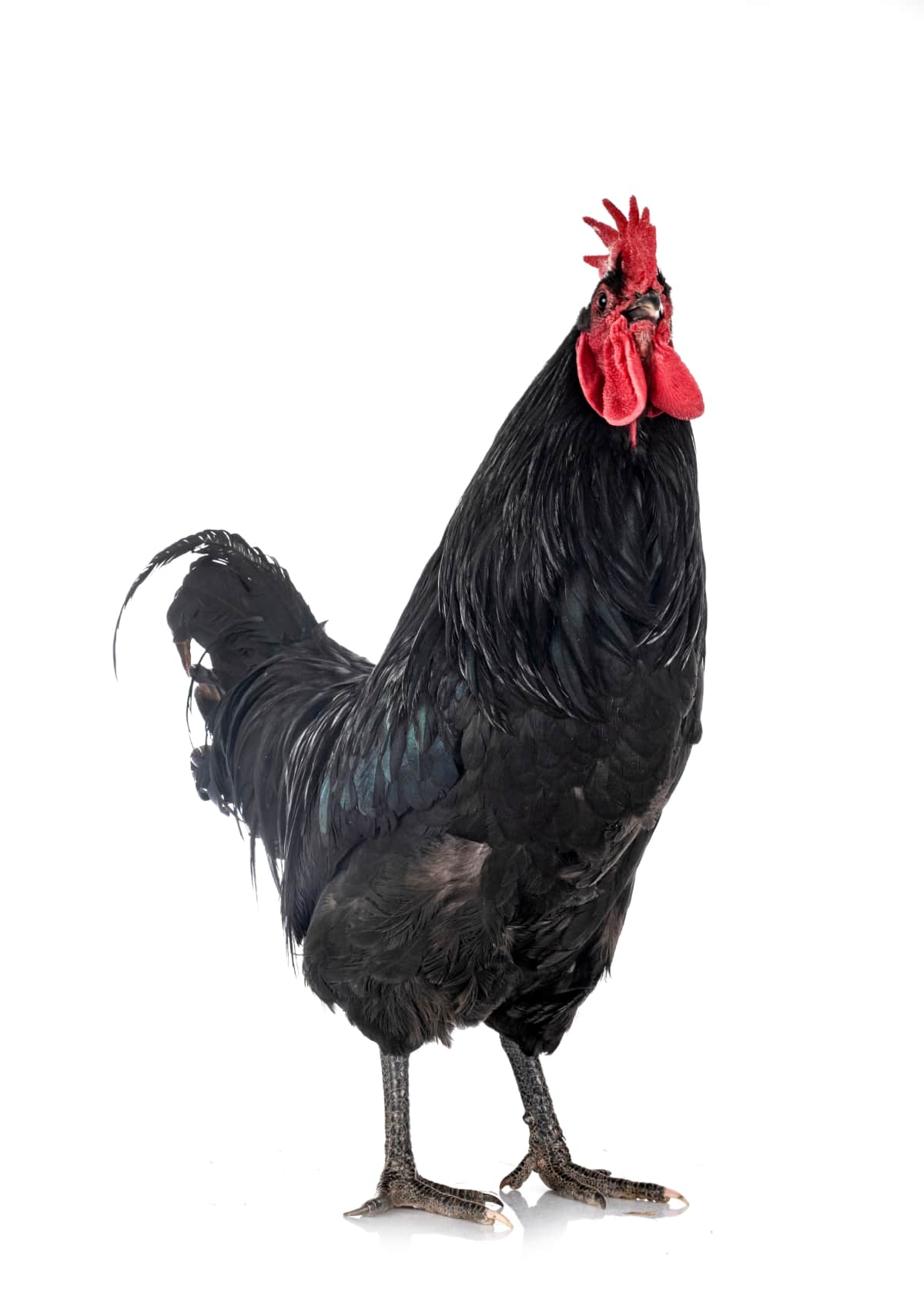Ayam Kedu, a renowned Indonesian heritage chicken, holds a significant place in Indonesia’s cultural heritage. Originating from the Kedu region in Central Java, it boasts a rich history intertwined with Javanese traditions.

All You Need to Know About Ayam Kedu
Distinctive Features and Characteristics of Heritage Chicken Breed
- Appearance: Characterized by their distinctive black plumage with iridescent green and purple highlights.
- Temperament: Known for their docile nature and adaptability to various environments.
- Utility: Renowned for their meat quality and egg production, contributing to their popularity among local farmers.
- Genetic Resilience: Ayam Kedu are resilient birds, well-suited to the Indonesian climate and terrain.
Ayam Kedu Types
Kedu Hitam (Black): Features and Popularity
The Kedu Hitam, or Black Ayam Kedu, is distinguished by its sleek black feathers and striking appearance. Renowned for its exotic appeal, this breed is highly sought after by poultry enthusiasts and breeders alike. Its glossy plumage, coupled with its elegant stature, makes it a favorite among collectors. Despite its popularity, Kedu Hitam requires careful breeding and maintenance to preserve its distinct traits.
Kedu Putih (White): Characteristics and Care
Characterized by its pristine white feathers, the Kedu Putih, or White Ayam Kedu, exudes elegance and grace. Known for its gentle disposition, this breed requires attentive care and a conducive environment to thrive. Regular grooming and proper nutrition are essential to maintain its pristine appearance and ensure its well-being.
Kedu Coklat (Brown): Appearance and Rarity
The Kedu Coklat, or Brown Ayam Kedu, showcases a rich, earthy brown plumage that sets it apart from other varieties. Its unique coloration contributes to its rarity, making it a prized addition to any poultry collection. Due to its scarcity, breeders often place great value on preserving and breeding this distinct variety, making it a coveted choice among enthusiasts.
Breeding and Rearing Ayam Kedu
Selecting Breeding Stock
- Choose birds with desired characteristics such as comb type, feather color, and body conformation typical of Ayam Kedu.
- Opt for unrelated individuals to maintain genetic vigor and reduce the risk of inbreeding.
- Prioritize birds free from diseases, deformities, or other health issues for breeding Ayam Kedu.
Best Practices for Rearing Ayam Kedu Chicks
- Provide a warm, draft-free space with proper ventilation and adequate bedding.
- Offer a balanced diet formulated for chick growth, including essential nutrients like protein, vitamins, and minerals.
- Maintain cleanliness in the brooder to prevent diseases and infections.
- Regularly observe chicks for signs of illness or distress and take prompt action if needed.
Feeding Ayam Kedu
Ayam Kedu Nutrition
A diet rich in protein (16-18%) and energy (2,800-3,200 kcal/kg) supports growth and egg production. Essential amino acids, for example, lysine and methionine, are vital for overall health.
Organic vs. Commercial Feed Options
Organic feeds offer natural ingredients, free from synthetic additives, promoting bird health and potentially enhancing egg quality. However, commercial feeds provide convenience and precise nutrient formulations, ensuring consistent results. Consider factors like cost, availability, and desired production outcomes when choosing between the two options.
Ayam Kedu Housing
Designing a Suitable Coop
When designing a coop for Ayam Kedu, prioritize adequate space and ventilation. Ensure the coop provides at least 4 square feet per bird to prevent overcrowding, promote their well-being, and minimize stress.
Ensuring Proper Ventilation and Space
Incorporate adjustable vents and windows to regulate airflow, keeping the coop fresh and comfortable year-round. Additionally, consider the orientation of the coop to maximize natural light exposure while providing shade during hotter months.
Ayam Kedu Health Management and Wellness
Common Health Issues in Ayam Kedu
- Parasitic Infections: Addressing common parasitic infestations like coccidiosis and worms.
- Respiratory Problems: Managing respiratory issues such as infectious bronchitis and mycoplasma.
- Nutritional Deficiencies: Ensuring a balanced diet to prevent deficiencies in vitamins and minerals.
Preventative Care and Treatments
- Hygiene Practices: Implementing strict hygiene measures to prevent diseases.
- Vaccinations: Administering vaccinations against common poultry diseases.
- Regular Check-ups: Conducting routine health checks to detect and address issues early.
- Herbal Remedies: Utilizing herbal remedies to support overall health and boost immunity.
In case you missed it: Wyandotte Chicken Egg Production: A Comprehensive Guide

Ayam Kedu for Shows and Competitions
Preparing Your Ayam Kedu for Exhibition
- Feeding Regimen: Provide a balanced diet to ensure optimal health and appearance.
- Grooming Practices: Regularly bathe and groom birds to maintain cleanliness and show readiness.
- Training Exercises: Practice handling and posing to accustom birds to show conditions.
Tips for Winning at Poultry Shows
- Attention to Detail: Present birds are impeccably groomed and in top condition.
- Know the Standards: Understand the breed standards and highlight your bird’s adherence to them.
- Confidence: Exude confidence in presenting your bird to the judges.
- Networking: Build connections with fellow exhibitors and judges to learn and improve.
Cultural Significance of Ayam Kedu
Ayam Kedu in Indonesian Traditions
Ayam Kedu holds a revered status in Indonesian culture, embodying traditional values and cultural heritage. These majestic birds are integral to various Indonesian ceremonies, such as weddings, rituals, and religious events, symbolizing prosperity, bravery, and protection.
Modern Uses and Symbolism
Beyond tradition, Ayam Kedu’s symbolism extends to modern contexts, representing national pride, resilience, and unity. Additionally, they are prized in competitive poultry shows, reflecting their cultural significance and beauty in contemporary society.
Conservation Efforts for Ayam Kedu
Challenges Facing the Breed
- Genetic Erosion: Threats of inbreeding and loss of genetic diversity due to small population size.
- Market Pressures: Competition from commercial poultry breeds leads to decreased demand for Ayam Kedu.
- Environmental Changes: Adapting to changing environmental conditions and habitat loss.
Role of Breeders and Organizations in Preservation
- Preservation Breeding: Breeders play a crucial role in maintaining the breed’s standards and genetic integrity.
- Advocacy: Organizations advocate for policies and initiatives supporting Ayam Kedu conservation.
- Networking: Facilitating networking among breeders and enthusiasts to exchange knowledge and resources for conservation efforts.
In case you missed it: Top 10 Fluffy Chicken Breeds to Raise in Your Backyard

Buying and Selling Ayam Kedu
Where to Buy Ayam Kedu Chickens
- Local Farms: Visit nearby farms or poultry breeders who specialize in Ayam Kedu.
- Online Marketplaces: Explore online platforms dedicated to livestock trading or agricultural forums.
Ayam Kedu Chicken Price
- Pricing Factors: Prices vary based on age, health, lineage, and breeder reputation.
- Average Cost: Ayam Kedu baby chickens may range from $5 to $20, while mature birds can cost between $20 to $100, depending on quality.
In case you missed it: Rumpless Game Chicken: Origin, Uses, Fighting Style, Price, and Characteristics, and Life Span

Conclusion
Throughout this Ayam Kedu guide, we have explored the distinct traits of Ayam Kedu, including its striking appearance, gentle temperament, and exceptional adaptability to various environments. We’ve delved into its significance in Indonesian culture, where it is cherished not only for its meat and eggs but also for its role in traditional ceremonies and rituals.
Note: The images presented in this post are intended solely for representation purposes. The images are meant to serve as visual aids and should not be relied upon as accurate representations of their real-life counterparts.
- Feed Your Flock for Less: Top 10 Tips to Save on Chicken Feed
- Ultimate Guide to Ossabaw Island Hog: Breeding, Raising, Diet, and Care
- Hatching Answers: The Top 10 Reasons Your Chickens Aren’t Laying Eggs
- Eggs and Economics: Breaking Down the Cost of Raising Backyard Chickens
- Defend Your Greens: Proven Methods to Keep Iguanas Out of Your Garden
- Ultimate Guide to Cinnamon Queen Chicken: A Comprehensive Guide for Beginners
- Ultimate Guide to California Tan Chicken: Breeding, Raising, Diet, Egg-Production and Care
- Ultimate Guide to Marsh Daisy Chicken: Breeding, Raising, Diet, and Care
- 10 Types of Chicken Farming Businesses You Can Start for Profits